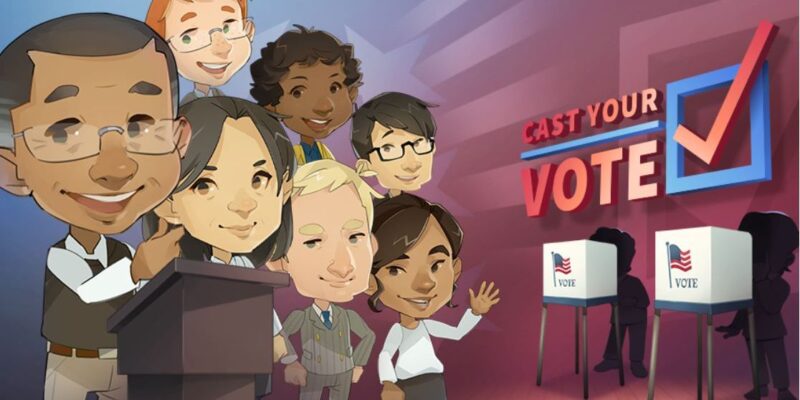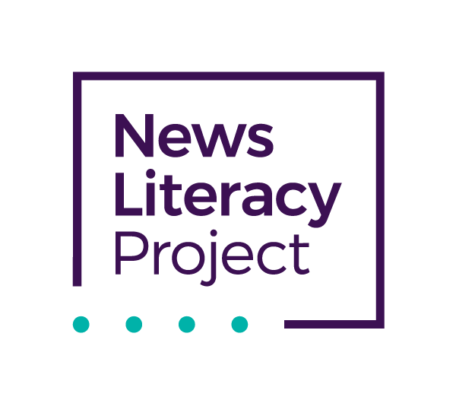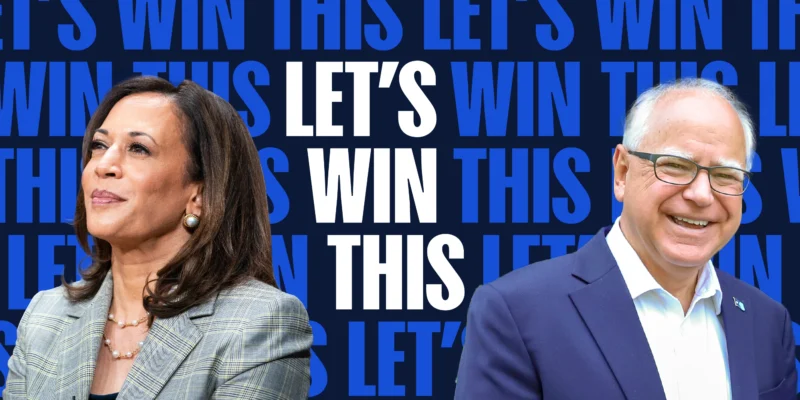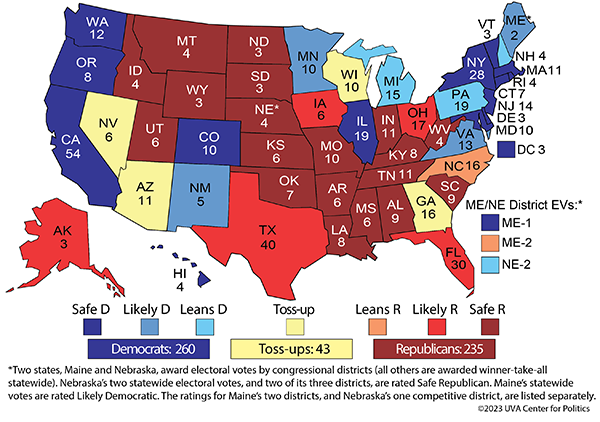15 Resources To Teach the 2024 Presidential Election

Every election year means a decision for our country—either we stay the course or we pivot to a new leader and even a different political party. The 2024 election season is shaping up to be quite the teachable moment. Capitalize on this moment in time and teach the 2024 election with lessons and discussion about everything from political parties to the election process to election rights.
Regardless of your political persuasion, it’s an important year to teach the presidential election and what democracy means for our future. Here are 15 ways to engage students in the 2024 election without getting mired in politics.
1. Play Cast Your Vote

In this online game, students engage in mock elections, from learning about candidates to watching debates and casting their votes. It’s a great way to reinforce how voting works and what students should do when they consider a candidate.
Learn more: Cast Your Vote game at iCivics, and get more election resources while you’re at their site.
2. Identify misinformation

Now more than ever before, elections are filled with misinformation. Teach students about misinformation and how candidates are using it, how to identify it, and how new technology like AI is changing the information landscape, with resources from the News Literacy Project. Their election-misinformation awareness campaign helps students spot false information and get good at finding credible, fact-based information.
Learn more: News Literacy Project
3. Debate a school issue
Is your school considering a ban on plastic water bottles? Do your students want a more diverse dress code? Pick an issue that is relevant for the students at your school, and then have your class pick sides and debate the issue. Check out these extensive lists of debate topics for middle school and high school (plus these special lists for controversial or funny debate topics!). Talk about how that process is also important when choosing presidential candidates.
4. Hold a mock election
Want to engage your class in a mock election? This 3-day mock election lesson from iCivics will have your students engaged in the democratic process in a hands-on way. (Note: You’ll have to create a free account.)
If you want to go beyond the classroom, have your students vote in the largest mock student presidential election. Each year, the Youth Leadership Initiative conducts the largest secure, student-only online mock election in the nation, using electronic ballots tailored to each student’s home legislative district. It’s free to register your class or school for the historic event and see which candidate the kids of America choose.
5. Teach voting rights with creative poster designs
Engage your students in a creative poster project that promotes the importance of voting for all adult U.S. citizens. First, look for inspiration from vintage political posters, suffrage posters, and more modern posters encouraging people to vote. Talk about the historical role voting posters have played in leading to women’s suffrage and the Voting Rights Act of 1965. Have students analyze the use of color, imagery, language, and style in these posters. Who is the audience meant to be persuaded by this poster? What is the message? Is it effective? Then have students consider those same elements in their own design, either drawing by hand or using Canva accounts.
You might allow the class to vote on the posters they think are the most effective. Which is the most visually appealing? Which has the strongest message?
6. Participate in the 2024 Call for Change Project
Radio station KQED wants to hear from young people about what’s important to them. If you teach middle or high school, check out the Your Election 2024 Project. Students can make their own commentaries about the election, what matters to them, and what they think about politics and democracy.
Learn more: KQED Call for Change: Your Election 2024 Project
7. Get the facts
Start with this list of facts about the 2024 election, like 244 million Americans will be eligible to vote this year and election results are not final on Election Day.
Learn more: Ten Things To Know About the 2024 Presidential Election
8. Talk about the key issues
A presidential election is always about the federal government and how large it should be, and then there are issues that are top-of-mind for voters like climate change and energy, healthcare, and taxes. The AP has an overview of where both candidates stand on these topics. Use this article to start a research project or discussion about what each candidate stands for, and how to build opinions about candidates based on their statements.
Learn more: Harris and Trump Offer Worlds-Apart Contrasts on Top Issues
9. Go to the source

Check out the websites for both candidates, watch their speeches, read their quotes, and have students discuss what they think about each candidate based on what they’re telling America. Have students pay close attention to the words each candidate uses. How have their actions aligned with those words?
Learn more: Kamala Harris campaign site and Donald Trump campaign site

10. Don’t forget the VPs
The 2024 nominees for vice president are two very different people. Spend a little time learning about Tim Walz and J.D. Vance and comparing the two. Also discuss: What does a vice presidential pick bring to the campaign? How much does a vice president matter anyway?
11. Keep an eye on the polls
As Election Day gets closer, election polls will be a constant source of entertainment, worry, and teaching. Polls are a great way to talk about statistics and data and the commentary around each poll.
Learn more: FiveThirtyEight
12. Study election maps

Bring geography into the conversation with electoral mapping. Study electoral maps from previous campaigns, look at a map of your state to see how the districts were drawn, and talk about gerrymandering. Then, in the days after the election, review the electoral maps to talk about what we can learn from this type of data.
Learn more: The Center for Politics
13. Watch videos about the election process
There are a lot of confusing words and concepts involved in our election process. A good first step is to teach students the basic vocabulary. Also check out these videos that explain the election process for kids.
14. Read books about the election
Along with knowing how presidential elections work, it’s important to know the history behind our election process. How did elections begin? Is everyone allowed to vote? What is the electoral college? Explaining it all can be tricky. Whether you’re tackling the topic online or in person, here are 26 books about elections for kids to enhance your lesson (plus a free printable).
15. Put history in context
This year students will hear a lot about how democracy is on the ballot. Help them understand what this means and the history of democracy, including voting rights and voter suppression, with resources from Facing History and Ourselves.
Learn more: Facing History and Ourselves
Plus, check out How To Teach Politics in Class (and Live To Tell About It).
What are your favorite 2024 election resources? Share in our We Are Teachers HELPLINE group on Facebook!
Source link





